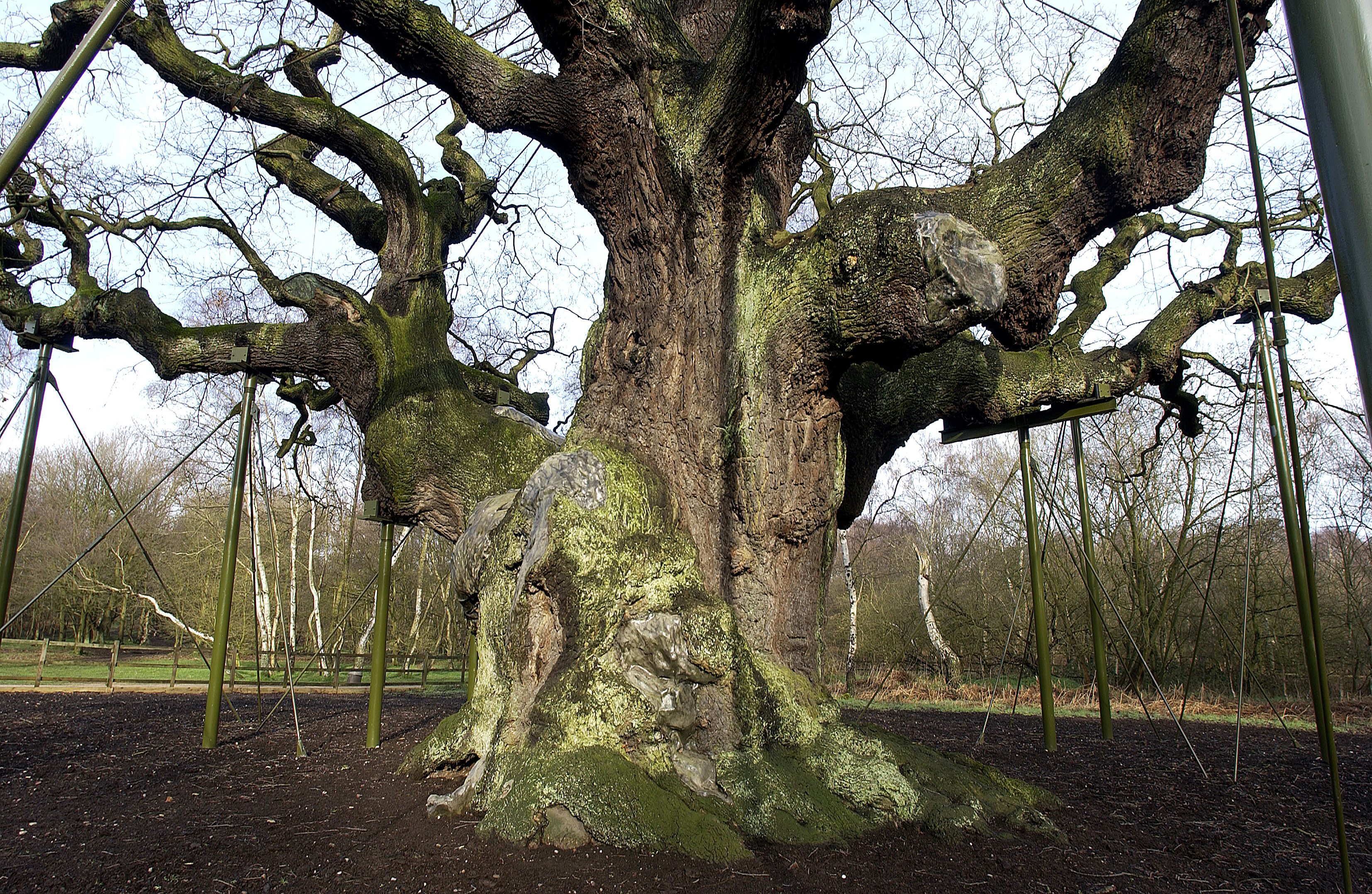Hornbeam
Our native hornbeam (Carpinus betulus). This species may live for 350 years and it's considered ancient from 225 years.
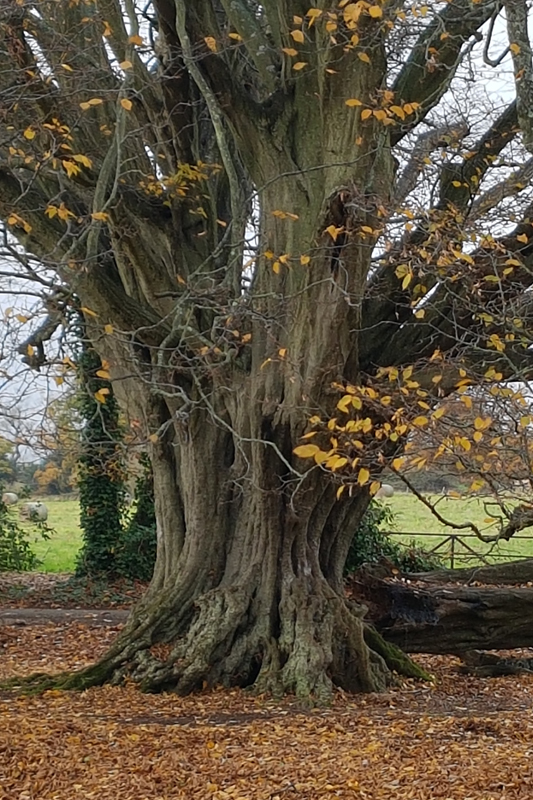
Ancient hornbeam. (Photo: Roy Kemeny)
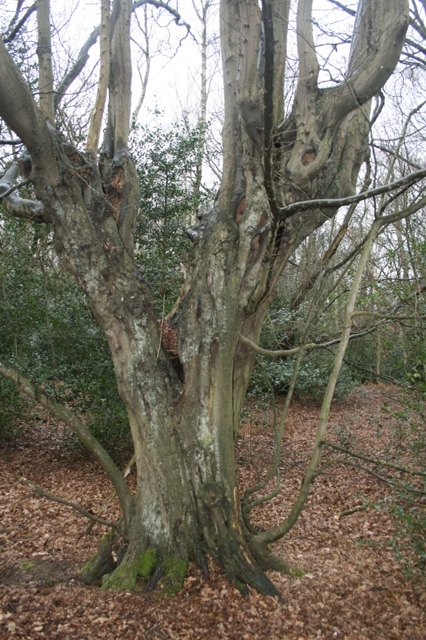
Veteran hornbeam. (Photo: David Alderman)
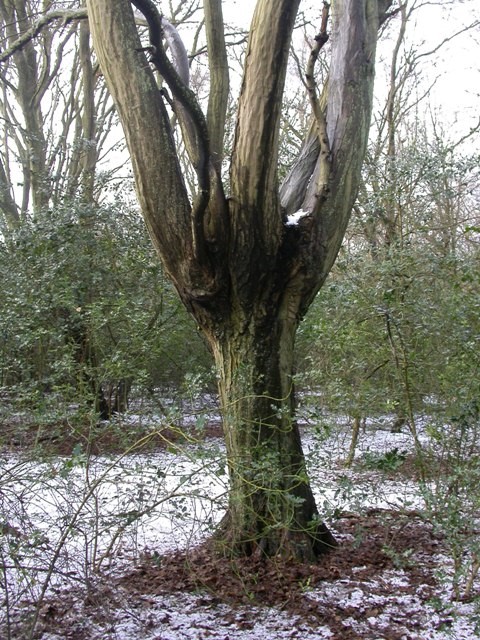
Notable hornbeam. (Photo: David Alderman)
Distribution
Mostly confined to the heavier clays and chalk and limestone soils of the south and south-east of England, although planted throughout the UK.
Typical location
Woodland, wood pasture, parkland, hedgerows and designed landscapes.
Age
Hornbeam may be able to live for 350 years, although 250 may be more typical on many sites.
All hornbeam will be ancient from 225 years onwards, although many will have ancient characteristics from around 175 years.
Typically a veteran hornbeam will be 150-200 years of age and a notable hornbeam may be 100-150 years old.
Size
Hornbeam can grow up to 4.5m plus in girth.
Record all hornbeam more than 2m.
Consider recording all hornbeam with any ancient characteristics more than 1.75m.
It’s important to rely on characteristics rather than size, which is an unreliable indication of age. Most ancient hornbeam will be greater than 2.5m in girth but many hornbeam within woodland, or if historically managed as a pollard, may be no more than 2m in girth.
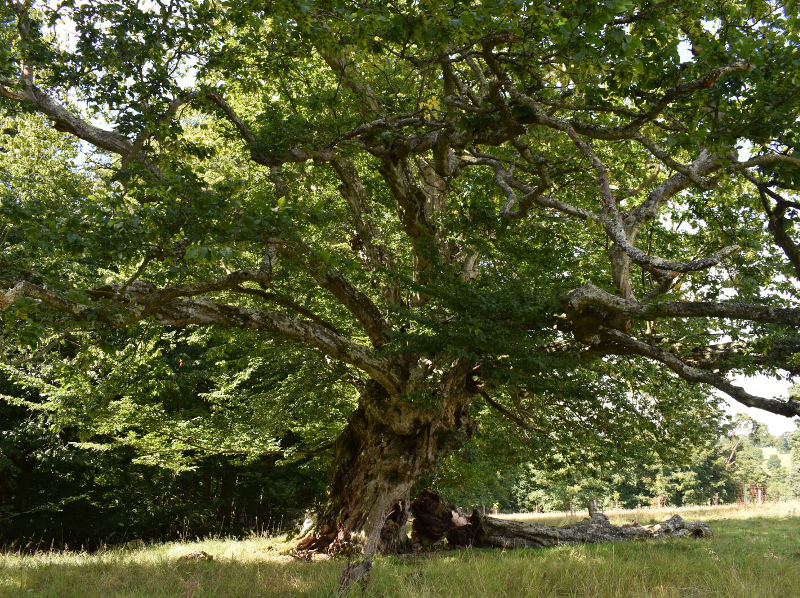
The Scotney Castle hornbeam is thought to be the oldest tree of its species in England. (Photo: Tim Gear/WTML)
Ancient characteristics
- Major trunk cavities or progressive hollowing
- Decay holes
- Physical damage to trunk
- Bark loss
- Large quantities of dead wood in the canopy
- Crevices in the bark, under branches or on the root plate, sheltered from direct rainfall
- Fungal fruiting bodies (from heart rotting species)
- A high number of interdependent wildlife species
- Epiphytic plants
In addition the tree may have:
- A pollard form or show indications of past management
- A fragmented trunk
- Cultural or historic value
- A prominent position in the landscape

Ancient hornbeams may have physical damage on the trunk or hollowing trunks. (Photo: David Alderman)
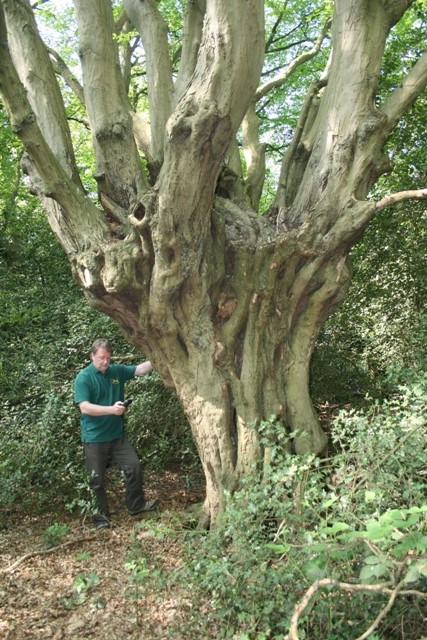
Ancient hornbeams may show signs of past management like pollards. (Photo: David Alderman)

Major trunk cavities leading to hollowing. (Photo: David Alderman)
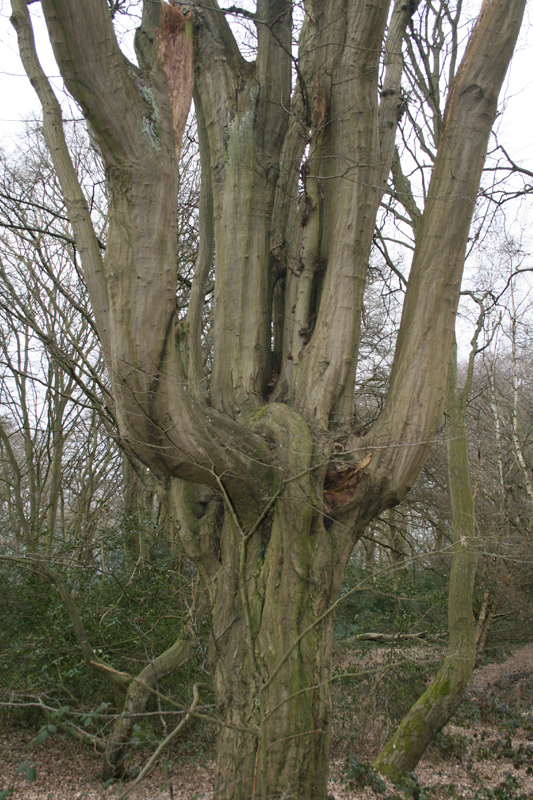
This veteran hornbeam is an old pollard. (Photo: David Alderman)
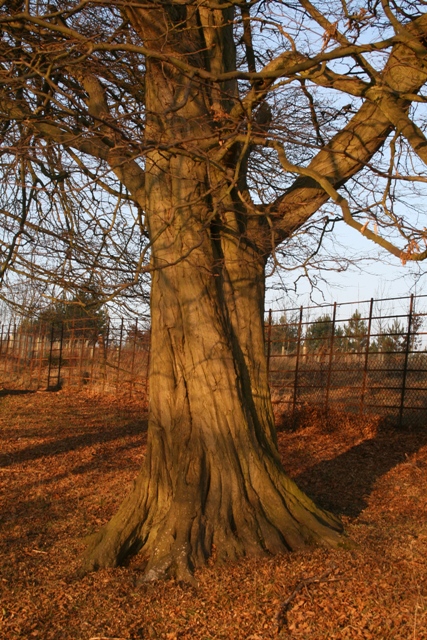
Notable trees may hold a prominent position in the landscape. (Photo: David Alderman)
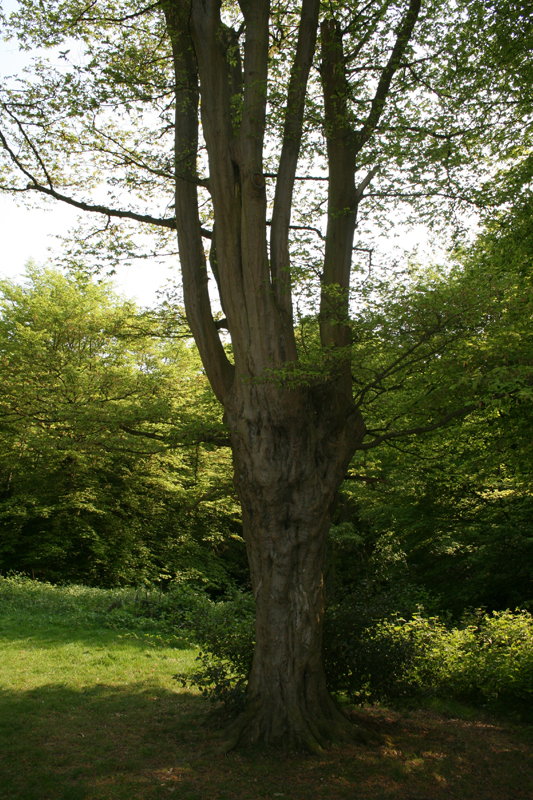
Veteran hornbeam that has been pollarded. (Photo: David Alderman)
